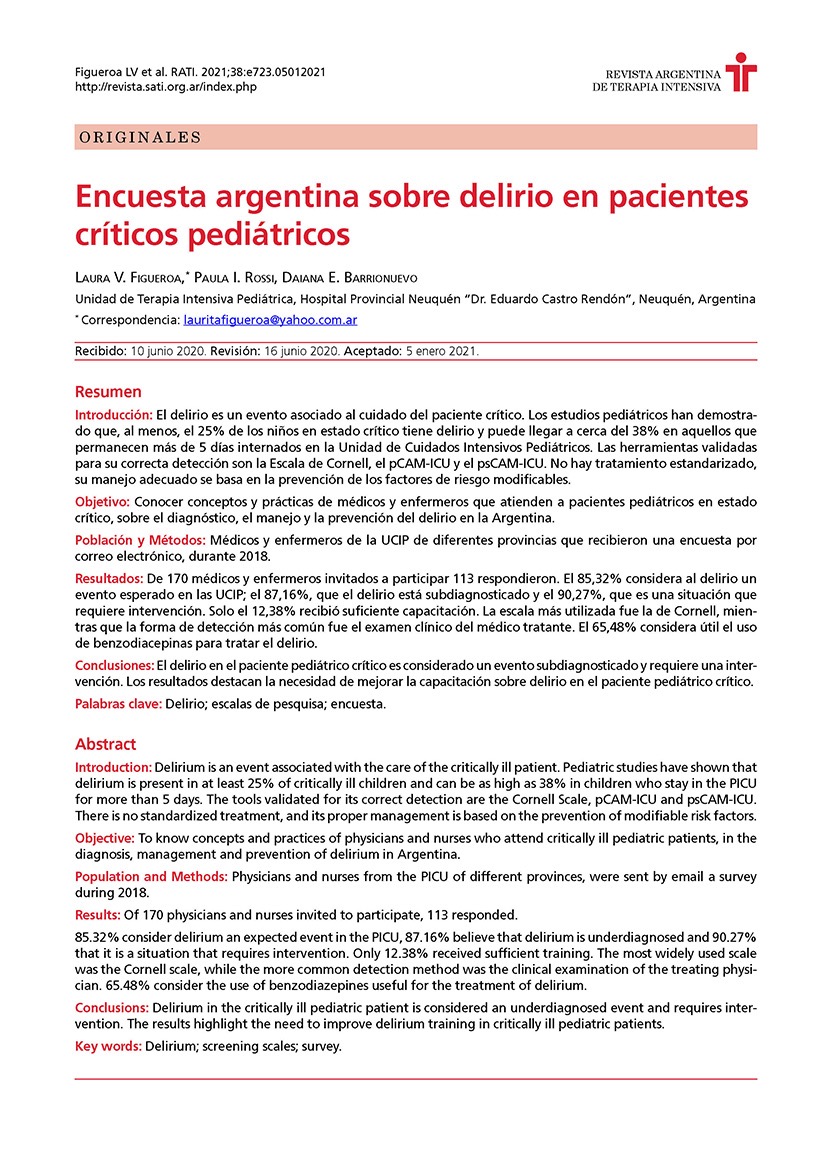Resumen
Introducción: El delirio es un evento asociado al cuidado del paciente crítico. Los estudios pediátricos han demostrado que, al menos, el 25% de los niños en estado crítico tiene delirio y puede llegar a cerca del 38% en aquellos que permanecen más de 5 días internados en la Unidad de Cuidados Intensivos Pediátricos. Las herramientas validadas para su correcta detección son la Escala de Cornell, el pCAM-ICU y el psCAM-ICU. No hay tratamiento estandarizado, su manejo adecuado se basa en la prevención de los factores de riesgo modificables.
Objetivo: Conocer conceptos y prácticas de médicos y enfermeros que atienden a pacientes pediátricos en estado crítico, sobre el diagnóstico, el manejo y la prevención del delirio en la Argentina.
Población y Métodos: Médicos y enfermeros de la UCIP de diferentes provincias que recibieron una encuesta por correo electrónico, durante 2018.
Resultados: De 170 médicos y enfermeros invitados a participar 113 respondieron. El 85,32% considera al delirio un evento esperado en las UCIP; el 87,16%, que el delirio está subdiagnosticado y el 90,27%, que es una situación que requiere intervención. Solo el 12,38% recibió suficiente capacitación. La escala más utilizada fue la de Cornell, mientras que la forma de detección más común fue el examen clínico del médico tratante. El 65,48% considera útil el uso de benzodiacepinas para tratar el delirio.
Conclusiones: El delirio en el paciente pediátrico crítico es considerado un evento subdiagnosticado y requiere una intervención. Los resultados destacan la necesidad de mejorar la capacitación sobre delirio en el paciente pediátrico crítico.
La revista no retiene los derechos de reproducción (copyright) por lo que los autores pueden volver a publicar sus trabajos con la sola mención a la fuente original de publicación.

